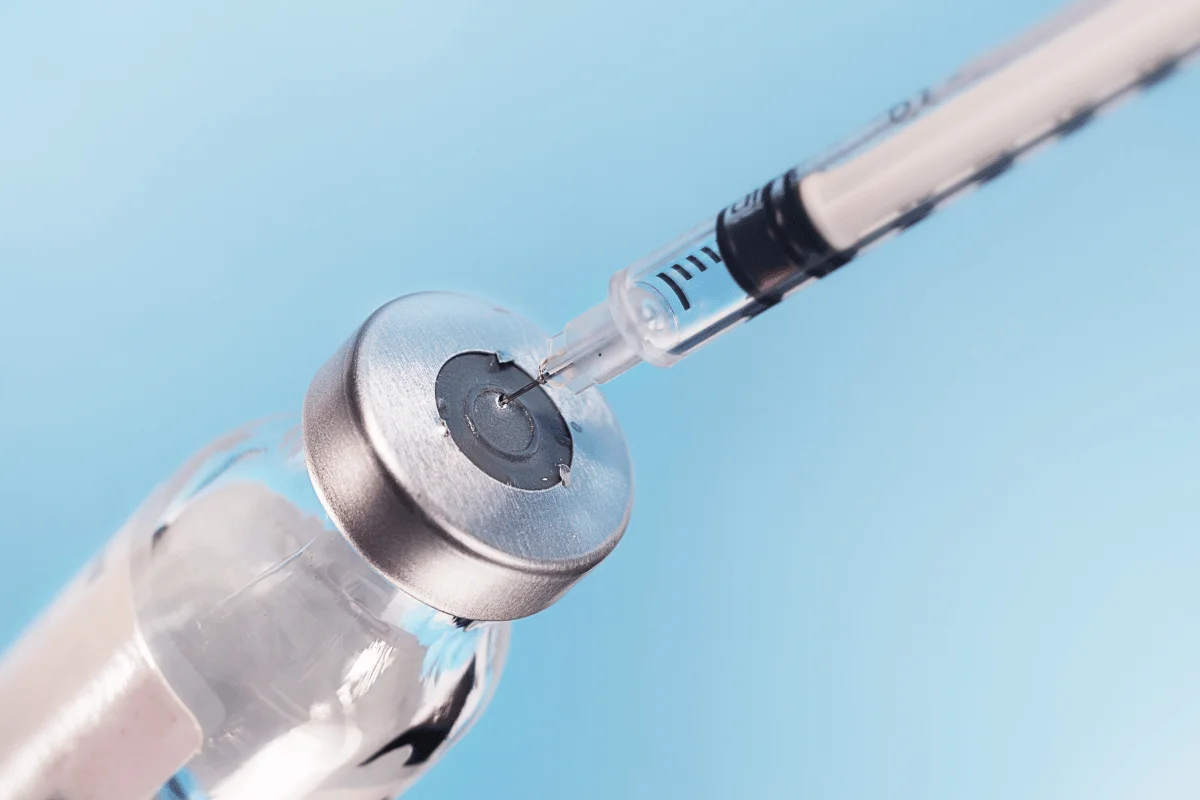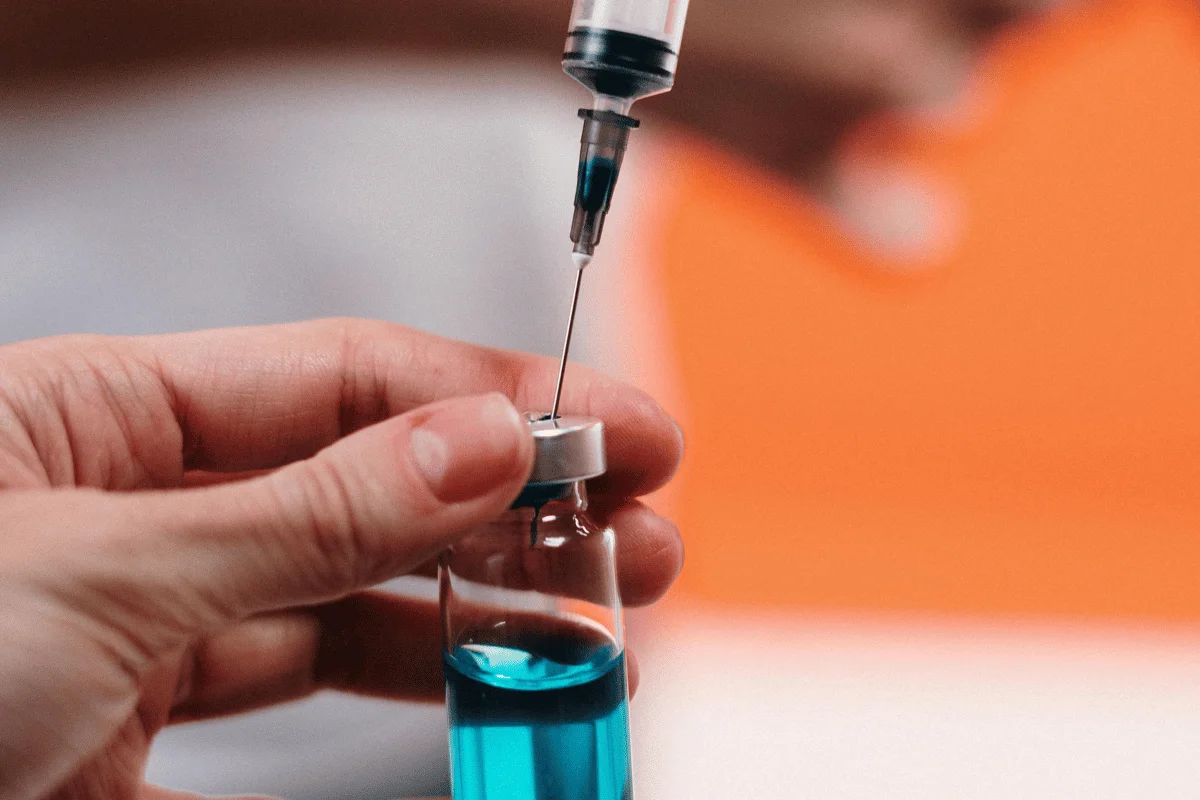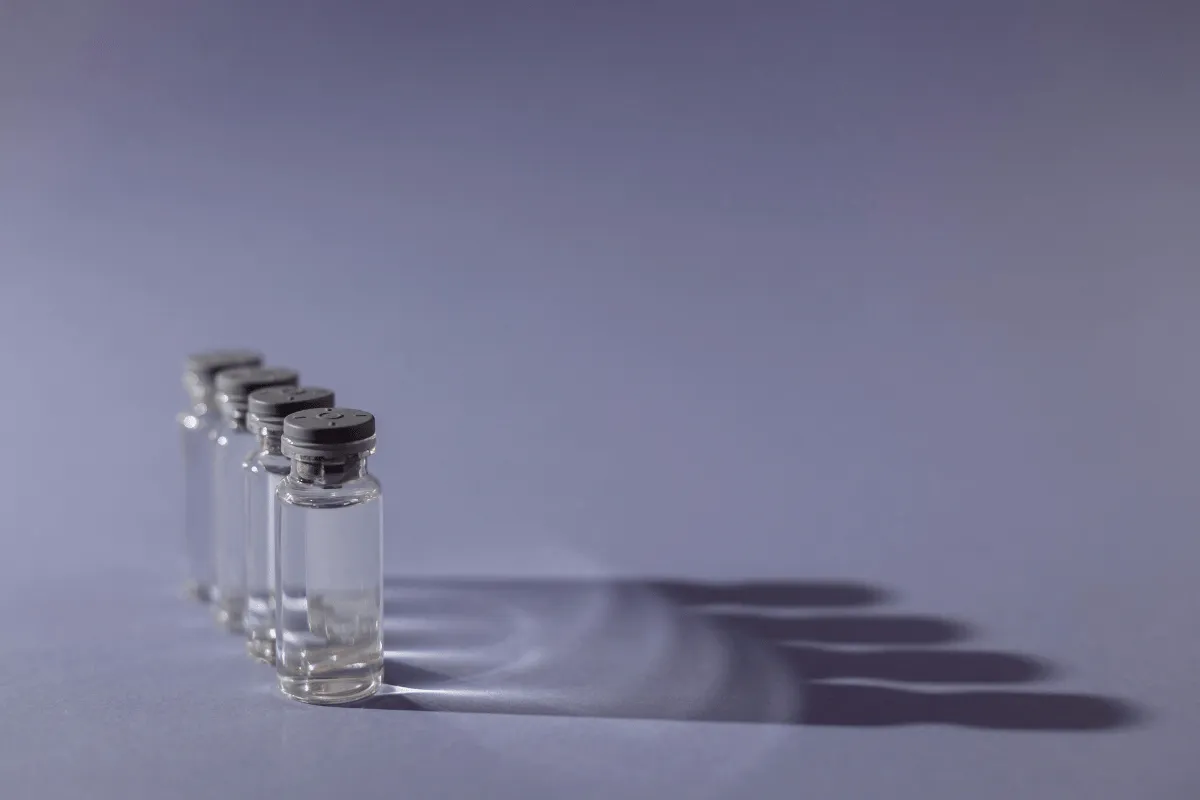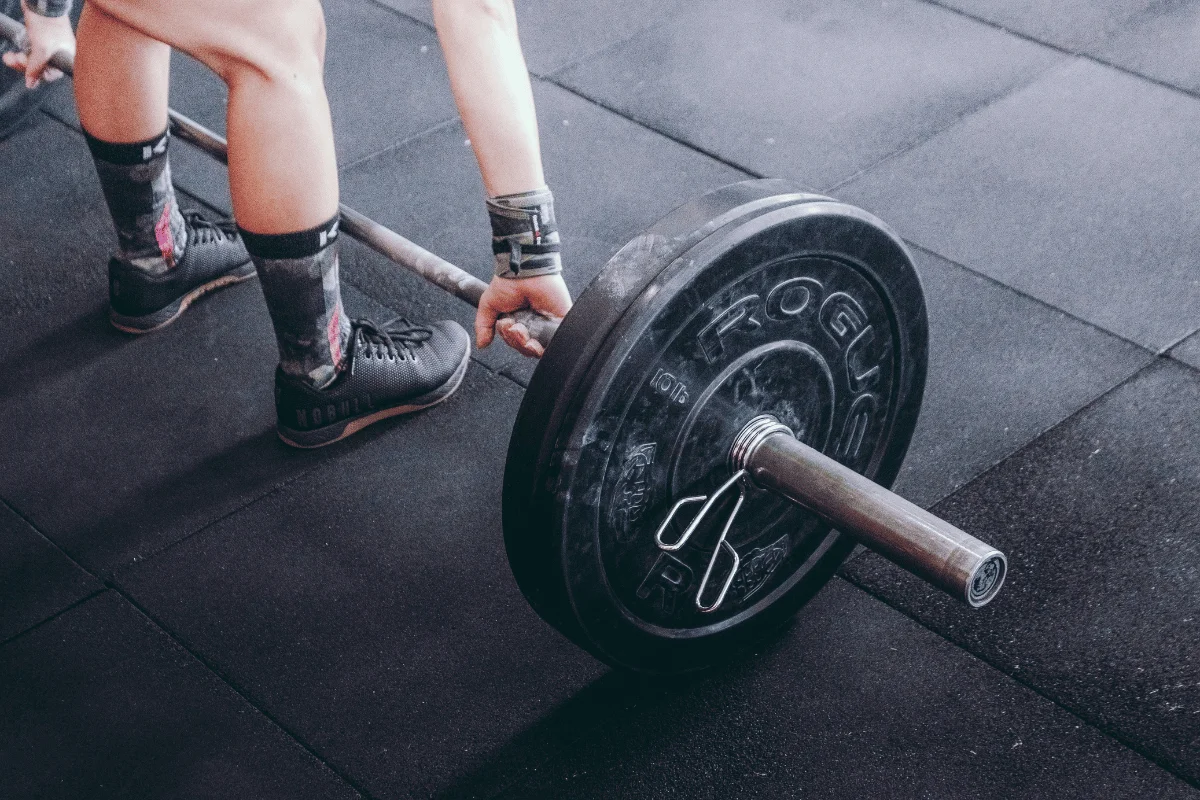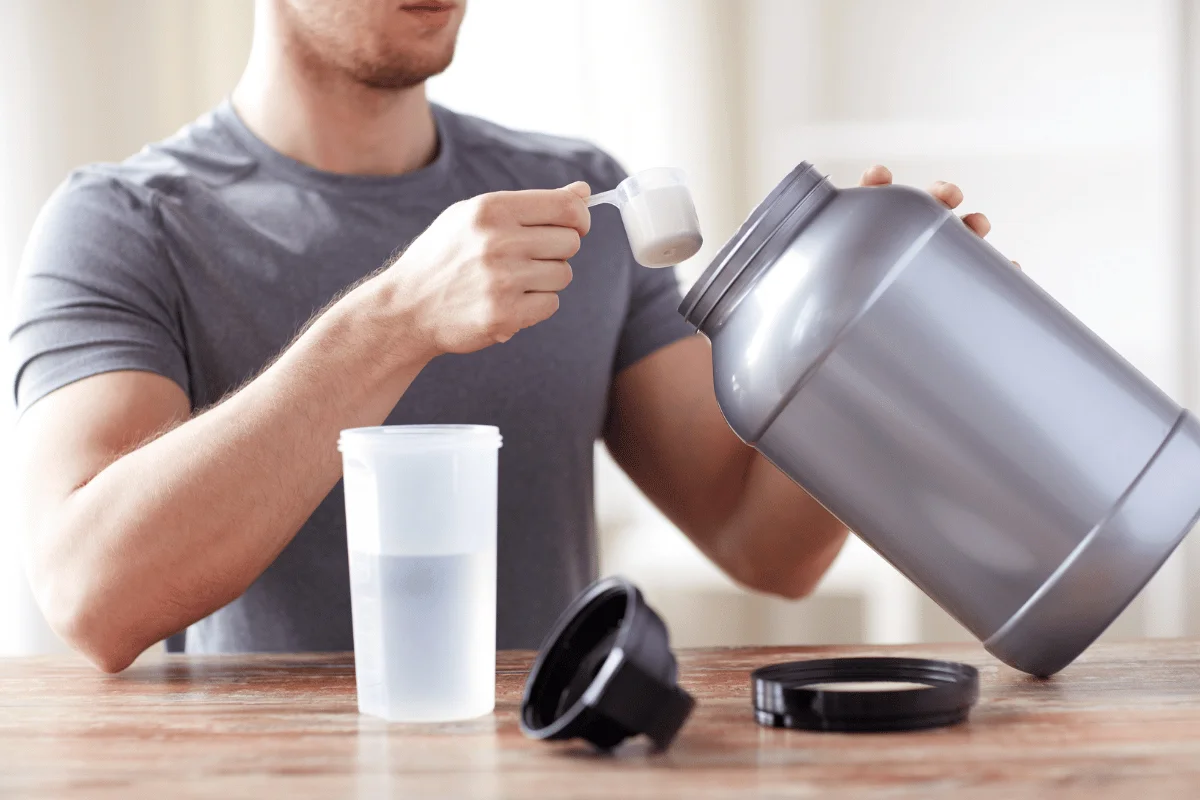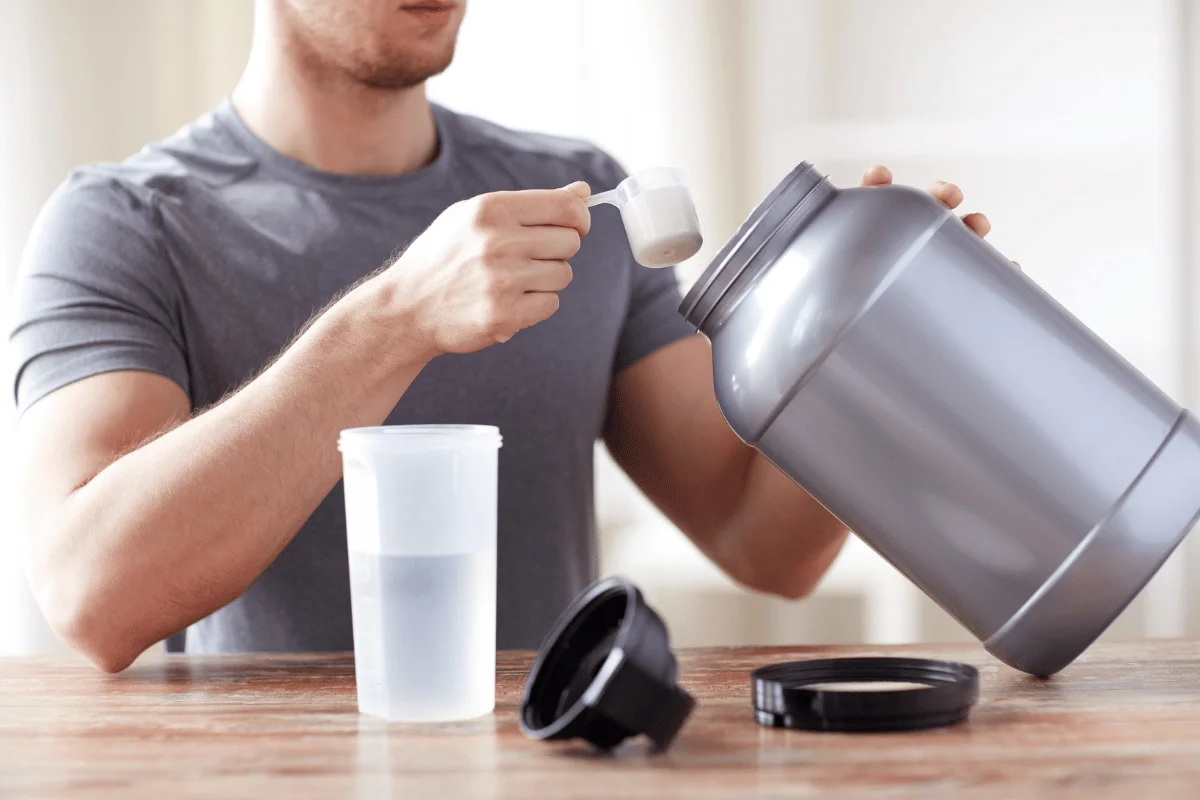[Disclaimer: The content in this article is solely for informational purposes and does not substitute medical advice. Always consult a qualified medical practitioner before using any peptides or supplements.]
If you’re a gym enthusiast or sports geek, you must have heard of the TB-500 and BPC-157, which are known for their injury-healing tendency. Both peptides aid the recovery of multiple tissue types, such as muscles, tendons, ligaments, and cartilage.
In addition to repairing tears, strains, sprains, wounds, and burns, TB-500 and BPC-157 intake may even remodel bones.
Now, the question is, what could be the best healing peptide? Or would using the stack be the better option for you?
This article provides an overview of BPC-157 and TB-500 benefits and side effects. We’ve also outlined the similarities and differences between TB-500 vs BPC-157 and answered the common questions you might have regarding safety and average dosage of these peptides.
TL;DR – TB-500 vs. BPC-157
Let’s have a quick overview of the difference between TB-500 and BPC-157, along with their pros and cons:
| TB-500 | BPC-157 |
| TB-500 is a synthetic version of TB-4, derived from the thymus gland | BPC-157 is a synthetic peptide derived from human gastric juice |
| Pros | Pros |
|
|
| Cons | Cons |
|
|
| Best For | Best For |
| Bodybuilders and sports geeks requiring injury healing and muscle strength | People with injuries and gastrointestinal issues |
What is TB-500?
TB-500 is the synthetic version of TB-4, a healing peptide produced from the thymus gland and naturally present in wound fluid, platelets, and other tissues of humans and animals. TB-500 is one of the best peptides for athletic performance as it repairs tissue injuries.
However, its natural concentration might not be enough to provide quick healing. Therefore, TB-500 (a lab-made version of TB-4) is used to speed up the healing and recovery of damages.
TB-500 is one of the best peptides for bodybuilding and other sports, as it fixes injuries and helps athletes return to routine workouts or sports quickly.
TB-500 Benefits
Several research investigations, as well as anecdotal cases, have reported various TB-500 benefits, such as:
- Prevents scarring and fibrosis in multiple organs.
- Boosts the synthesis of immune cells.
- Could be used in the proliferation of stem cells, indicating its role in tissue regeneration.
- May enhance insulin sensitivity and fight hyperglycemia.
- Aids bodybuilders in enhancing their endurance and stamina.
TB-500 Dosage
TB-500 dosage is decided based on the injury and the individual’s age and health. However, you can refer to the following TB-500 dosage regimen for an idea:
- You may inject 2.0mg to 2.5mg of TB-500 twice a week after fixed intervals (like every Sunday and Wednesday) for 1.0-1.5 months.
- Pause the treatment for approximately two weeks. If needed, continue another treatment cycle of 1.0-1.5 months.
Note: TB-500 works best when injected into muscles or skin. It has a systemic effect, so you don’t need to inject it directly into the damaged area.
TB-500 Side Effects
TB-500 is normally a well-tolerated and safe peptide. However, it may induce temporary side effects in some individuals, which also subside after initial doses.
Common side effects may include:
- Irritation at the injection site
- Unwanted hair growth
- Stomach discomfort
- Mild dizziness
- Skin reactions
- Mild headache
- Tiredness
- Nausea
Note: Start TB-500 from a low dose and avoid intake if you have cancer or chronic health conditions.
What is BPC-157?
BPC-157 (aka Body Protection Compound-157) is derived from human gastric juice. The peptide is lab-made and comprises a chain of 15 amino acids. Scientists refer to it as a stable gastric pentadecapeptide since it can withstand harsh stomach acids and stay stable for approximately 24 hours.
As an anti-ulcerative peptide, BPC-157 holds great therapeutic potential for ulcerative colitis and other gastrointestinal issues. It is undoubtedly one of the best peptides for muscle growth. Additionally, BPC-157 is known to accelerate the healing of soft tissues, including muscles, tendons, and ligaments.
BPC-157 Benefits
BPC-157 is truly a body-protection compound as it fights against multiple complications. There are plenty of BPC-157 (peptide) benefits like it:
- May enhance bone density and reduce joint pain, resulting in better mobility.
- May enhance libido and improve erectile dysfunction in men.
- Is a safe pain reliever as it protects the body from the toxicity of over-the-counter painkillers or non-steroidal anti-inflammatory drugs (NSAIDs).
- Could reduce menstrual pain in women.
- Is the best peptide for healing ulcers, gastrointestinal fistulas, and inflammatory bowel diseases.
BPC-157 Dosage
You may take the BPC-157 dose orally (by mouth) or by injection, either through the subcutaneous (skin) route or intramuscularly (into the muscles). The oral dose works best for gastric issues, while the injection works best for tissue repair.
- The average recommended BPC-157 dose is 200mcg (0.2mg) to 300mcg (0.3mg) twice a day.
- That means you can take approx. 0.4mg to 0.6mg of BPC-157 every single day.
Pro Tip: If you’re taking BPC-157 and TB-500 peptides separately (instead of using a single product containing both peptides), you can take BPC-157 every day and TB-500 only every other day.
BPC-157 Side Effects
BPC-157 is well-tolerated. However, like other supplements, it may cause temporary side effects after initial doses, including:
- Acne
- Nausea
- Fatigue
- Anxiety
- Headache
- Hot flashes
- Abdominal pain
- Light-headedness
- Digestive discomfort
Note: BPC-157 is not recommended for anyone having diabetes, cancer, liver and kidney issues, or low blood pressure.
Comparative Analysis: BPC-157 vs. TB-500
Below is a comparative analysis of TB-500 and BPC-157, enlisting their basics, including composition, action mechanism, uses, benefits, and route of dose intake:
| Features | BPC-157 | TB-500 |
| Composition | A synthetic peptide with 15 amino acids | A lab-made version of TB-4 with 43 amino acids |
| Mechanism of Action | Enhances tissue repair by angiogenesis and nitric oxide regulation. | Decreases inflammation and promotes cell migration by regulating a cell-repairing protein called actin. |
| Primary Uses | Gastrointestinal and soft tissue healing | Improvement of muscle strength, flexibility, and injury recovery |
| Benefits | May treat gut issues, dermal issues, period pain, and erectile dysfunction | May ensure quick healing, enhance stamina, and improve performance |
| Potential Side Effects | Fatigue, headache, abdominal pain, and/or nausea | Dizziness, mild reaction on the skin, nausea, and headache |
| Dosage | 200-300 mcg daily for approximately a month | 2.0mg to 2.5mg twice a week for approximately 1-1.5 month |
| Administration |
|
|
Similarities and Differences
TB-500 and BPC-157 are considered the best healing peptides due to multiple reasons. They share slightly different yet complementary healing mechanisms.
Let’s look at their similarities and differences:
TB-500 and BPC-157 Similarities
Both peptides share similar therapeutic efficacies:
- TB-500 and BPC-157 improve the formation of blood vessels, migration of healing factors, and cell survival to enhance healing and tissue repair.
- Both peptides hold neuroprotective effects and may stabilize mood swings.
- TB-500 and BPC-157 reduce inflammation and reduce several inflammatory damages.
- Both healing peptides show therapeutic effects against corneal (transparent eye covering) damage.
- TB-500 and BPC-157 are the best peptides for tendon repair.
TB-500 and BPC-157 Differences
Read below to know the differences between TB-500 peptide vs BPC-157:
- TB-500 has systemic effects, whereas BPC-157 has a targeted healing impact, so it should be injected near the injury area.
- For healing, TB-500 binds with actin to maintain cell integrity and motility. In contrast, BPC-157 promotes nitric oxide production and interacts with VEGF (a protein that stimulates blood vessel formation) and EGR-1 (a growth-response protein) to promote angiogenesis.
- Anecdotal cases indicated that BPC-157 may reduce period pain in women and erectile dysfunction in men. In contrast, TB-500 doesn’t show any such potential.
- BPC-157 helps recover gastrointestinal fistula and ulcers. However, no such benefits of TB-500 have been reported.
Note: A peptide showing better efficacy in one therapeutic area doesn’t always mean that other peptides are ineffective. It could rather be due to more research on that specific peptide.
TB-500 or BPC-157: Which One Should You Choose?
It is hard to say which peptide is better for you. Both peptides show synergistic injury healing when taken together. However, TB-500 plays a better role in improving muscle strength and athletic performance based on its bioavailability and healing efficacy.
Also, TB-500 may show results more quickly than BPC-157. However, BPC-157 is the perfect peptide for gastrointestinal conditions. So, you may use both peptides to accelerate recovery and tissue repair.
However, if you want to opt for a single peptide, you may start with BPC-157. Later on, you may shift to the TB-500 and BPC-157 blend intake.
Remember, no matter which peptide you opt for, it is crucial to procure only from a reputable source, such as Biolongevity Labs. Biolongevity Labs aims to provide only top-quality peptides, blends, bioregulators, and supplements. They also rigorously test the products and never compromise their quality and purity.
Can I Take a BPC-157 and TB-500 Blend?
Yes, you can use a BPC-157 and TB-500 blend, as it is more convenient and affordable. By using a blend, you will save yourself from the hustle of using both peptides separately with their different dosing regimens.
As mentioned above, both peptides tend to form blood vessels from preexisting ones. These increased blood vessels enhance the supply of oxygen, nutrition, and healing factors to the damaged site. Therefore, the intake of BPC-157 and TB-500 blend may show a quicker and amplified healing effect.
BPC-157 + TB-500 Blend Dosage
The dosage of TB-500 + BPC-157 depends on multiple factors, including healing goals, the injection route (skin or muscles), and other individual dynamics.
- The average recommended BPC-157 + TB-500 dosage is 250mcg (0.25mg) to 500mcg (0.5mg) per day.
- Divide this everyday dosage into a further two to three injections.
Note: TB-500 and BPC-157 are supplied in powder form. So, you must dissolve the peptide powder in bacteriostatic water before using it.
The Bottom Line
Based on the exceptional healing efficacy of TB-500 and BPC-157, both peptides are together labeled as the Wolverine Stack. These peptides also reduce inflammation and show therapeutic effects on multiple organs.
The peptide combo (TB-500 and BPC-157) is particularly effective for healing musculoskeletal injuries and building muscle strength. That’s why sports geeks and gym enthusiasts love taking the TB-500 and BPC-157 blend, as it helps them recover quickly.
Frequently Asked Questions (FAQs)
Read below to learn the answers to the questions you might have regarding BPC-157 or TB-500 usage.
What Should I Consider Before Using BPC-157 or TB-500?
You must learn the right injection technique and all its protocols before injecting the dose into your body. Also, choose the right dosage depending on your condition. However, if you’re unaware of the right dose, start from the lower dosage and gradually move to the optimum dose.
It is also important to consult your healthcare provider before starting any peptide regimen. Additionally, avoid using BPC-157 or TB-500 if you have severe or chronic health conditions, including cancer.
How Do the Cost and Availability of BPC-157 and TB-500 Compare?
Considering the higher muscular strength offered by TB-500, it is a bit pricier than BPC-157. However, using a single blend (product) would be more affordable and convenient than having individual peptides and blending them.
Make sure to have high-grade and high-quality products from any trusted and well-reputed peptide source.
Are BPC-157 and TB-500 Safe for Long-Term Use?
Yes, BPC-157 and TB-500 are safe and well-tolerated. However, it is recommended that you take breaks between the peptide treatment cycles. For example, take a one-month break if you use the peptides for three months. Then, depending on your condition and desired goals, you may continue the treatment cycle.


